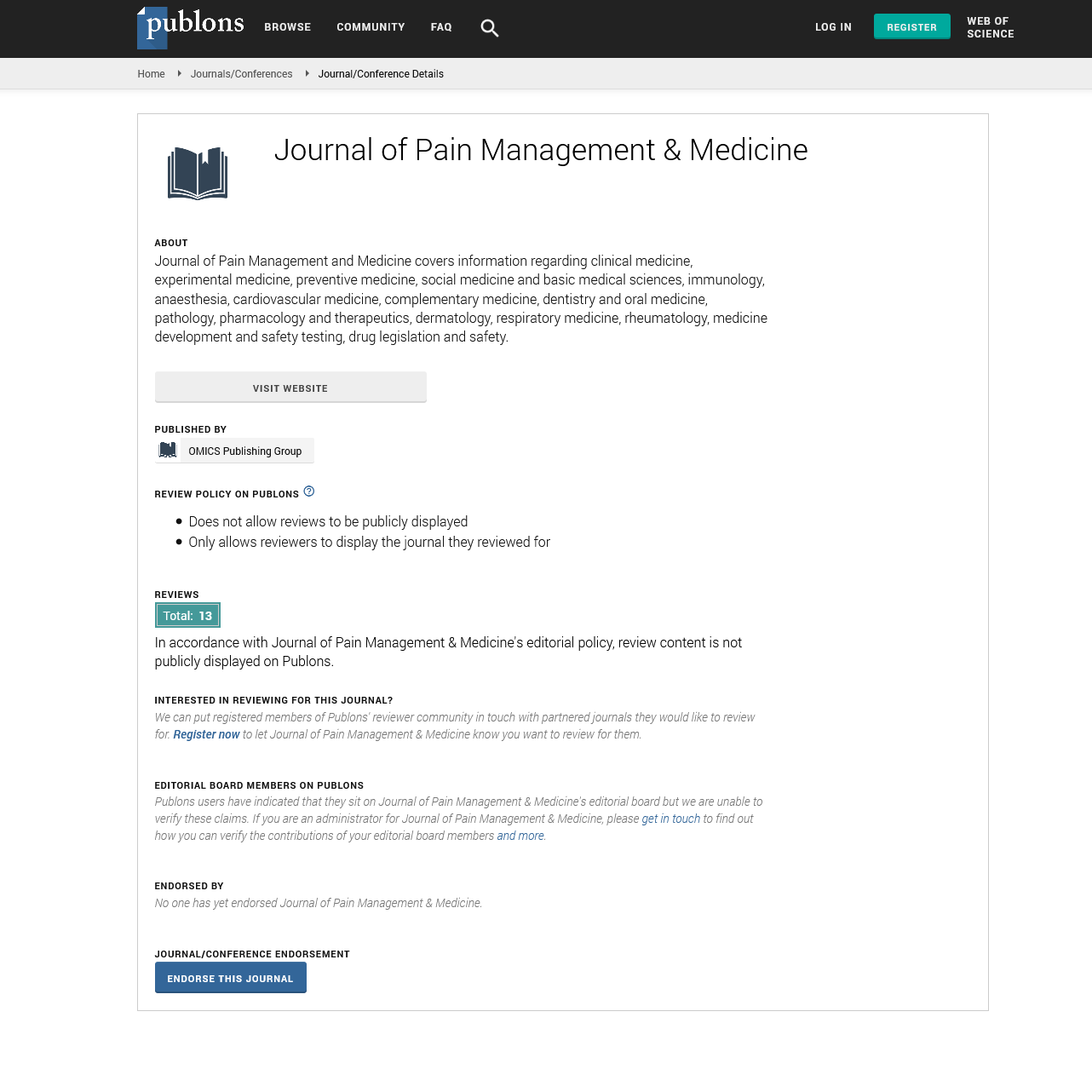Indexed In
- RefSeek
- Hamdard University
- EBSCO A-Z
- Publons
- Euro Pub
- Google Scholar
- Quality Open Access Market
Useful Links
Share This Page
Journal Flyer

Open Access Journals
- Agri and Aquaculture
- Biochemistry
- Bioinformatics & Systems Biology
- Business & Management
- Chemistry
- Clinical Sciences
- Engineering
- Food & Nutrition
- General Science
- Genetics & Molecular Biology
- Immunology & Microbiology
- Medical Sciences
- Neuroscience & Psychology
- Nursing & Health Care
- Pharmaceutical Sciences
Commentary - (2025) Volume 11, Issue 1
Traumatology: Advancing Emergency and Critical Care
Shen Dong*Received: 24-Feb-2025, Manuscript No. JPMME-25-28516; Editor assigned: 26-Feb-2025, Pre QC No. JPMME-25-28516 (PQ); Reviewed: 12-Mar-2025, QC No. JPMME-25-28516; Revised: 19-Mar-2025, Manuscript No. JPMME-25-28516 (R); Published: 26-Mar-2025, DOI: 10.35248/2684-1320.25.11.308
Description
Traumatology, the branch of medicine dedicated to treating injuries caused by accidents, violence, or other physical trauma, plays a crucial role in modern healthcare. As a field that intersects with surgery, emergency medicine, and rehabilitation, traumatology has evolved significantly over the years, with advancements in medical technology and surgical techniques improving patient outcomes. Despite these advancements, challenges remain, making it essential to continue developing innovative strategies for trauma management.
One of the most remarkable developments in traumatology is the improvement in pre-hospital emergency care. Rapid response teams, advanced life-support ambulances, and helicopter emergency medical services (HEMS) have drastically reduced the time between injury occurrence and medical intervention. The "golden hour" concept emphasizes the importance of providing critical care within the first hour after trauma, as timely intervention can significantly improve survival rates and minimize complications.
In the hospital setting, trauma centers have become highly specialized facilities equipped to handle severe injuries. The integration of multidisciplinary teams, including trauma surgeons, orthopaedic specialists, neurosurgeons, and critical care physicians, ensures a comprehensive approach to trauma management. Technological advancements such as 3D imaging, robotic-assisted surgery, and artificial intelligence-driven diagnostics have further enhanced the accuracy and efficiency of trauma care.
Despite these improvements, several challenges persist in the field of traumatology. One of the major concerns is the disparity in trauma care accessibility. While urban centers may have wellequipped trauma facilities, rural and underdeveloped areas often lack the necessary resources, leading to increased mortality and morbidity rates in these regions. Addressing this issue requires investment in telemedicine, mobile trauma units, and training programs for healthcare providers in remote areas.
Another critical aspect of traumatology is rehabilitation and post-trauma care. Surviving a traumatic injury is only the first step; long-term recovery often involves extensive physical therapy, psychological support, and pain management. The integration of rehabilitation specialists within trauma teams has proven to be beneficial in helping patients regain function and improve their quality of life. Additionally, mental health support is crucial, as post-traumatic stress disorder (PTSD) and depression are common among trauma survivors.
In recent years, preventive strategies have gained attention in traumatology. Public awareness campaigns on road safety, workplace hazard management, and violence prevention have been instrumental in reducing trauma cases. Governments and healthcare organizations worldwide are advocating for stricter safety regulations, improved infrastructure, and community education to minimize the incidence of traumatic injuries.
The future of traumatology looks promising with the advent of regenerative medicine, stem cell therapy, and advanced prosthetics. These innovations hold the potential to revolutionize trauma care by promoting faster tissue healing, reducing long-term disabilities, and improving overall patient outcomes. Additionally, artificial intelligence and big data analytics are being integrated into trauma research, enabling better prediction models for injury patterns and treatment responses.
Conclusion
Traumatology remains a dynamic and essential field in medicine, continuously evolving to meet the demands of emergency and critical care. While significant progress has been made in trauma management, challenges such as accessibility, rehabilitation, and prevention still need to be addressed. By embracing technological advancements and implementing effective healthcare policies, traumatology can continue to save lives and improve the recovery process for trauma patients worldwide.Citation: Dong S (2025). Traumatology: Advancing Emergency and Critical Care. J Pain Manage Med.11:308.
Copyright: © 2025 Dong S. This is an open access article distributed under the terms of the Creative Commons Attribution License, which permits unrestricted use, distribution and reproduction in any medium, provided the original author and source are credited

